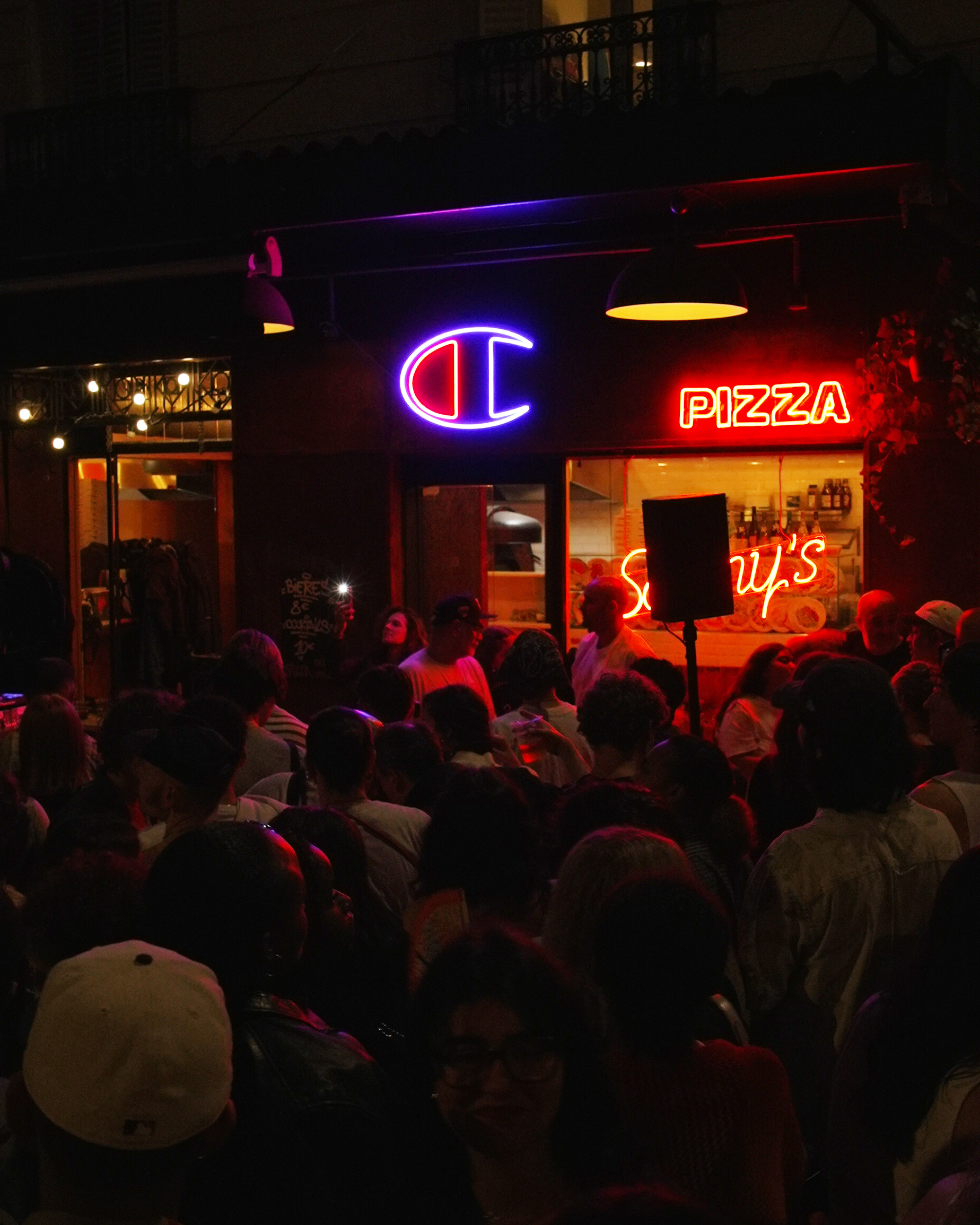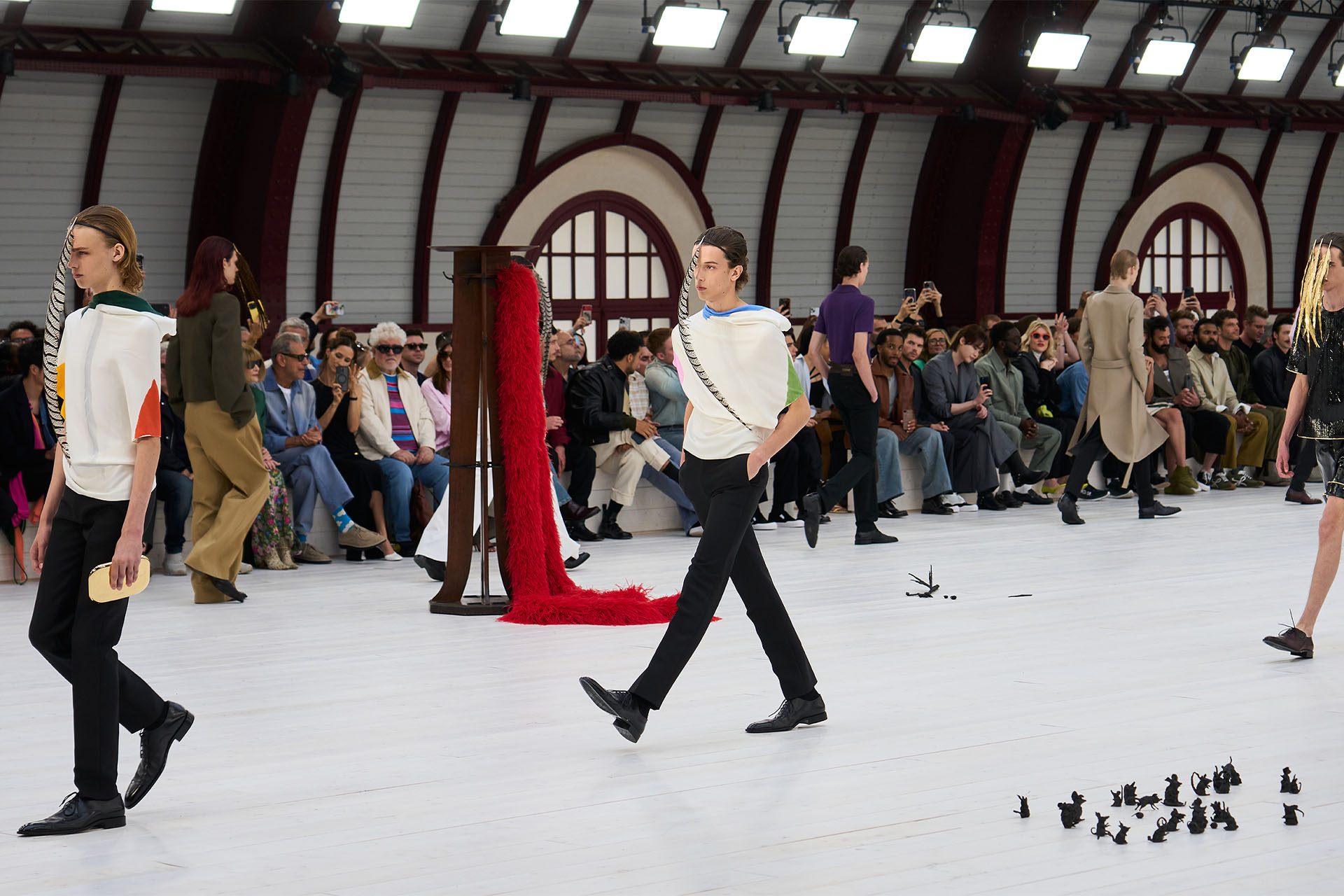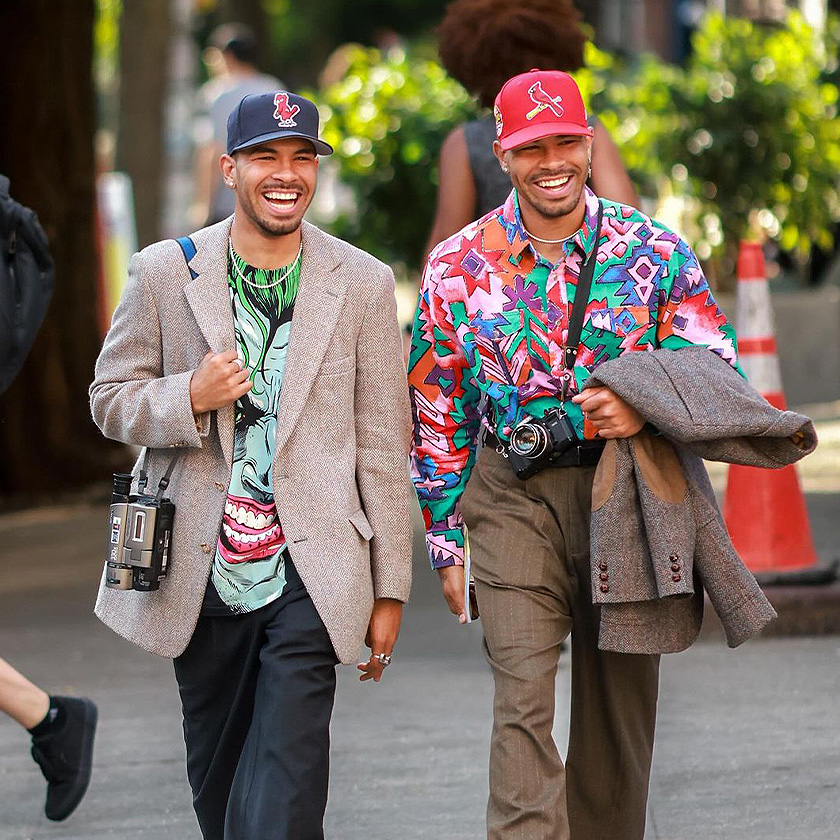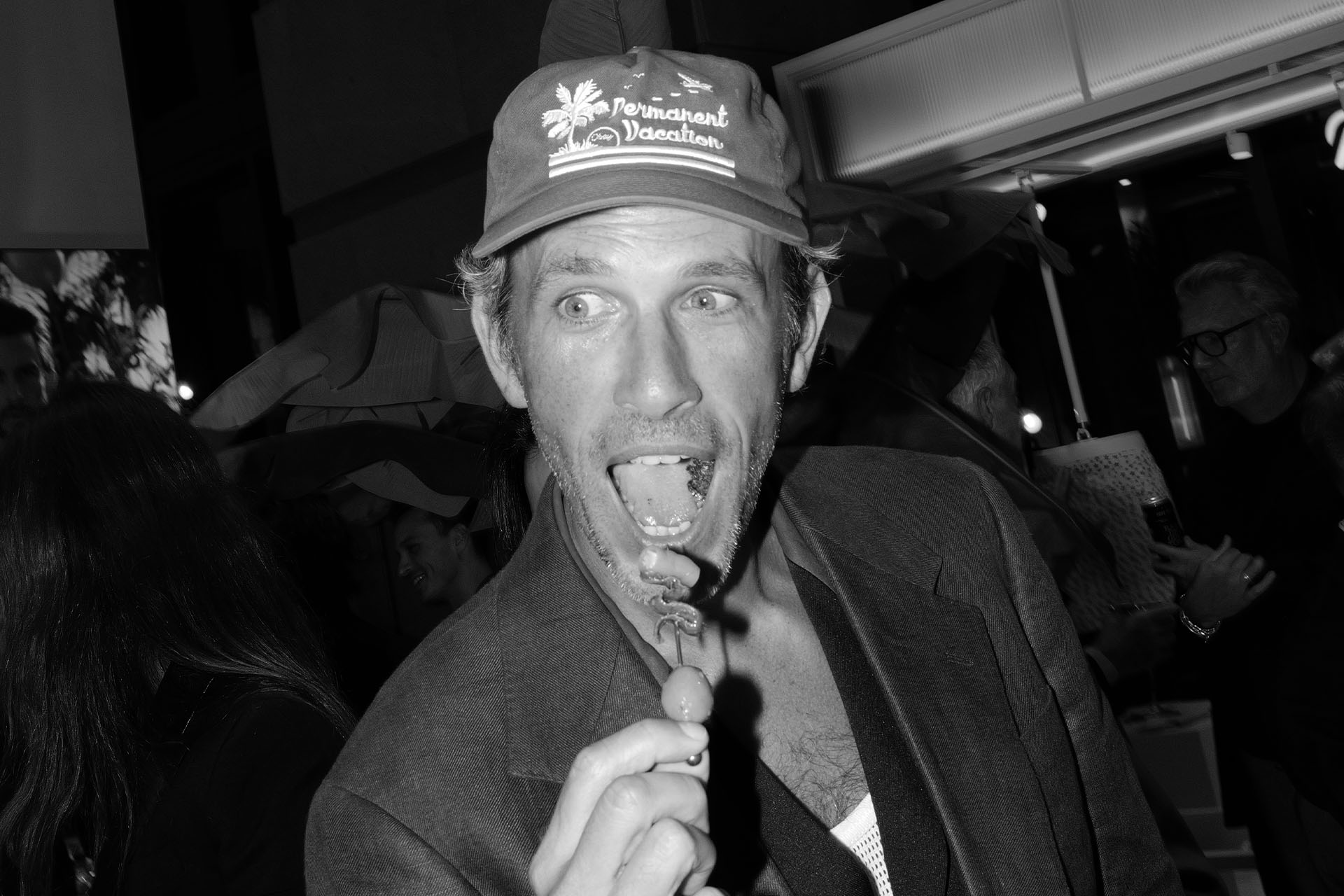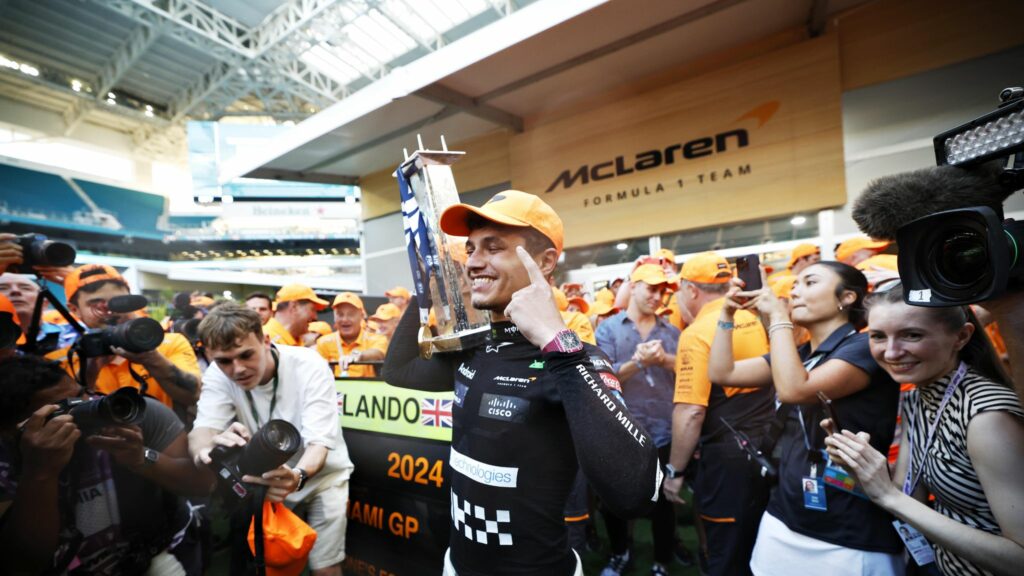
THE GLINTING electroform-dial on Ed Sheeran’s Royal Oak Perpetual Calendar John Mayer ‘Crystal Sky’ Audemars Piguet attracting stares in the Red Bull Racing garage. Kansas City Chiefs’ Patrick Mahomes sidling into the Alpine motorhome, flashing an exclusive Rolex Oyster Perpetual Platinum Day-Date, complete with 40mm ice blue dial and baguette diamond-set bezel. And just about every other person – from wunderkind Max Verstappen through to German influencer Caro Daur – sporting the freshly-birthed, brightly-hued Kith Heuer collab.
The Formula 1 Crypto.com Miami Grand Prix might be a mere three years old and nestled in amongst 23 other races, but for the season’s biggest display of wristwatch rivalry, it’s lights out and away we go.

“When I first made it to Formula 1, in 2000, I treated my father and myself to a Rolex,” Jenson Button tells me from the paddock at this year’s Miami GP. ���It was my first special watch, a steel Rolex Daytona. After all the years of hard work and commitment, it felt like we’d made it and the Daytona was a symbol of that.”
In the fight for brand alignment in Formula 1, it’s typically a duel between Rolex and Tag Heuer for pole position.
Tag Heuer might stake a claim for oldest association with motorsport, formerly-named ‘Heuer’ having cut its teeth on dash-mounted rally timers, but Rolex’s celebrity in racing – thanks to Sir Malcolm Campbell beating records at Daytona Beach in a Rolex Oyster, the subsequent vogue of Rolex’s Cosmograph Daytona and, of course, the even bigger fanaticism brought to the watch by actor and racer Paul Newman – has done a great deal to secure a podium spot for the Swiss house for the rest of eternity. “Everyone knows this watch is for the racing driver,” Button pushes.
It’s a status quo that endures across almost the full panoply of Formula 1’s many races. Certainly at more historical events, there’s reverence for Rolex’s cachet as the Official Timepiece of Formula 1. But though the coronet logo appears ubiquitously, and the Rolex Pit Lane Clock looms above every track, shifts in audience demographics and the aggressive uptick in America’s participation means that new orders are brewing.

Formula 1 in 2024 is a very different beast to what it was even five years ago. Its evolution might easily be charted by comparing the oldest surviving race weekends to recent calendar inclusions. If not quite the most ancient, at least the most iconic, Monaco’s grand prix is a distillation of a century’s heritage and history. Attending is still a closely-guarded privilege, for yacht owners in Brunello Cuccinelli linen and Loro Piana loafers. The race’s trophy case is a time-honoured Vuitton trunk and the timepieces betray a subtler kind of generational wealth. It’s Flavio Briatore in a Rolex Daytona ‘Zenith’ or Patrick Dempsey in a Monaco Calibre 12. On the other end of the spectrum, the American additions to the schedule, in their relative infancy, are an open door for the influx of bright young things who have come to the sport via Netflix’s Drive to Survive or F1 owner Liberty Media’s recent social media strategy, who bring with them a taste for newness, ostentation and hypey collabs. If Monaco is for quiet luxury, then Miami is for out-and-proud horological bling.
Diehard racing fans might roll their eyes at Twitchers and TikTokers, but their effect on sport sponsorship has been profound. Nielsen recently tracked a 107% increase in sponsorship spending globally, linked to significant growth in non-traditional sectors like esports and, in the case of Formula 1 particularly, a 54% increase in American viewership and the lowering of the average spectator age to 32.
The opportunity, for brands willing to meet this new generation at their point of entry, is enormous. It was an obvious choice for TAG Heuer to use Miami to launch their limited edition partnership with Ronny Fieg’s trendy lifestyle brand Kith, hosting a Met Gala-worthy dinner at Miami’s Rubell Museum, and for Tudor to tease a pair of custom Chameleon-dial Black Bay Ceramic watches created to match the Visa Cash App RB F1 Team’s technicolour Miami livery.
For the same reason, Miami is an incredible dissemination ground for directional, driver-designed watches, such as Lewis Hamilton’s creations with IWC Schaffhausen (most recently, the Portugieser Tourbillon Rétrograde Chronograph Lewis Hamilton). “Hamilton is not just one of the most accomplished athletes in the world,” says IWC CMO Franziska Gsell, “He’s a trendsetter in all things fashion and design and an activist for social change, which means he holds a strong appeal to a very heterogeneous group of people from different cultural backgrounds.”
Besides the young swarms, Miami’s grand prix holds a magnifying glass to the city’s unique microcosm of unfathomably rich transplants. “There’s been a wealth migration here, in the last three years. It’s actually pretty astounding,” says Tom Garfinkel, President and CEO of the Hard Rock Stadium, and Managing Partner of the Miami GP. Thanks to the fact that Florida doesn’t levy taxes on income or capital gains, billionaires flock to Miami to save a few bob. “Miami is an aspirational city, and a curator of culture, and more Europeans, Latin Americans and wealthy people from New York are moving here permanently,” Garfinkel continues, “Which means we have got to try and create the kind of hospitality and personalisation [at the race] that’s on a higher level than you might see anywhere else.”
It’s for this reason that the traditional Paddock Club viewing suites are supplemented by a staggering list of alternative immersive experiences, such as the Casa Tua trackside nightclub, an artificial marina full of race-facing yachts and a ‘Hard Rock Beach Club’ between turns 11 and 13, boasting pools, famous DJs and even the odd mermaid. A pageantry you certainly wouldn’t find at Spa or Monza.
For watch brands, the attending wealth is especially significant. “We knew this was the venue for us to present the Monaco rattrapante,” says Tag Heuer Heritage Director Nicholas Biebuyck, “So we had a private dinner on the Thursday night, and invited only 20 or so special guests who are either prospective or previous buyers of the rattrapante.” Sitting at $230,626(or 155,000 Swiss Francs for the customised version), this isn’t your typical Tag. “With this watch we know we are going to have to go after a very different audience,” Biebuyck continues, “and Miami is the place to do that.”

This is also where Ferrari and McLaren partner Richard Mille, whose entry-level watch is still five-figures, really comes into its own. At no other race globally will you see so many general punters splurging $228,720 on an RM 67-02.
Jostling for position on the wrists of celebrity attendees is a rare 18k Gold Rolex GMT II with factory set diamonds on Miami Heat’s Jimmy Butler, NFL player Odell Beckham Junior’s astonishing $500,000 ($758,588) blue ceramic Audemars Piguet Royal Oak Perpetual Calendar and GP-winner Lando Norris’ hand-decorated, sapphire crystal Richard Mille 67-02 ‘High Jump’. An honourable mention goes to Travis Kelce for personifying the whole spectacle in a garish green Givenchy two-piece, Bottega sunglasses, a backwards Alpine cap and sporting his favourite Rolex Submariner 126610.
“The challenge that we’re now presented with,” admits Biebuyck, “is how to handle that delta between the enthusiast viewership and those who see race weekends more as a party. And watch presentation is the canary in the coal mine for that.”
Of the various places where you can see that gulf at its widest, Miami is probably top of the list. Between the Hard Rock mermaids, Kelce causing chaos among Swifties and Donald Trump (in a Rolex) sauntering around the starting grid, pointing and fist-bumping at a baying grandstand, Florida’s grand prix has so much going on that it would be easy to lose sight of the reason we’re all supposed to be there – the race itself. For flush Miami locals, the $19-38,000 price of a Paddock Club pass is on par with just one strap of an RM 027, so if you’re caught up in Casa Tua and forget to glimpse the track, perhaps it doesn’t feel like such a big deal. The interplay between sport and spectacle is complex, to be sure, and the calibre of watch on show in Miami reflects both America’s boon to the Formula 1 industry, and the risk that conspicuous consumerism might become the main attraction.
This story originally appeared on Esquire UK
Related:
Sylvester Stallone is auctioning off his rare watch collection
The richest F1 drivers: who is the highest paid man on the grid?








